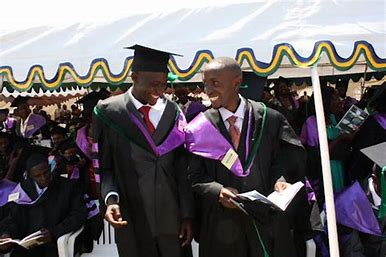
With the advent of the knowledge production cultures of interdisciplinarity and transdisciplinarity, a cultural revolution is on in earnest. This cultural revolution is a global phenomenon, which is affecting and will affect everyone, every institution, the way we organise, our businesses, our human relations, unions, conventional wisdom, bureaucracies, communication and the way we produce knowledge and other products.
The revolution is the most characteristic feature of our now information-driven knowledge-based society. You belong to the past if you are not conscious of this revolution.
In this short article, we want to make you aware of the influence of the new cultural revolution epitomised by information as everything and the new knowledge production cultures of interdisciplinarity and transdisciplinarity, which is wrecking the dominance of unions, bureaucracies and conventional wisdom in the way we organise, behave in workplaces and build our futures.
Impact of the new cultural revolution on unions
Organisations have been what they are because of their dependence on hierarchy and bureaucracy to maintain their influence and integrity. However, the emergence of cyberspace (CS) and Corporate Virtual Workplace (CVW) is threatening unions in diverse ways to the point they are rendered powerless and beginning to be unnecessary
Unions have historically used their power to negotiate or withdraw their labour to influence decisions in organisations, industry, government (s) and thus the economy, by taking advantage of labour in the conventional equation Labour + Raw Materials = Economic Success. The thesis is that if they fail to convince employers through negotiation to act in their favour, they can withdraw their labour and by so doing influence decision-making in their favour. Withdrawal of labour would affect economic performance and economic success negatively, and so decision-makers would fear the consequences and act accordingly.
However, with the rise in stature of new knowledge production, that thesis has been tested and found wanting in this century of knowledge-based societies. It is not surprising that the disruptive nature of active unions of the past century has been tamed by time. As Peters (1992) observes, it is no longer what enterprises produce and of what quality that matters most, but whether they can acquire and control the necessary, relevant and critical information. He says, “The strategic advantage(in the 21st century) now lies in the acquisition and control of information”.
To stay afloat, therefore, unions must transform themselves and become information and knowledge-driven and, preferably, be ahead of employers. The era of shouting their voices hoarse, or just withdrawing their labour to cause management of organisations to take action in their favour is long gone. They must use information and knowledge to foster their credibility and good working relationship within organisations. They can solve their problems fast, meaningfully and effectively without coercion based on reliable information and knowledge.
Otherwise, with cyberspace and corporate virtual workplaces, their influence on decision-making is set to decline further. Already the noise of unions of the last century seems to have remained there.
Impact of the new cultural revolution on conventional wisdom
Conventional wisdom is the body of ideas, explanations or beliefs accepted by the public and/or experts in a field as true. However, conventional wisdom, even if it has stood the test of time, can be wrong and is almost always wrong.
For example, one belief by the Catholic Church, passed on for millennia, was that it was the Sun that revolved around the Earth. Holding the opposite view was taboo and punishable. It was Galileo Galilei who, using his newly invented telescope who demonstrated that it was the he Earth that revolves around the Sun, not the other way. He was persecuted by physicists and mathematicians involved in the study of heavenly bodies and by the Catholic Church, which was conquered that he was shattering its teaching. It was just like when Jesus was accused of teaching contrary to progress the time tested religious teachings of the Pharisees and Sadducees.
Another good example of conventional wisdom that was exposed as wrong was the academic and intellectual belief by university professors that all credible knowledge was contained in the works of three knowledge workers: Aristotle, Hippocrates and Galen. The three were taken by academics of the medieval times in Europe as the only source of knowledge and leading thinkers.
One fresh student of medicine at the University of Pisa in Italy challenged his professor to explain why they do not think but only regurgitate the thoughts of ancient thinkers such as Aristotle, Hippocrates band Galen without any questioning. He asked one of his professors of medicine, “Supposing Aristotle was wrong?”. This angered his professors immensely. And even the other students wondered what was wrong with Galileo.
When reflecting on his future in a university where professors did not want to think critically and analyse information and knowledge critically, he found himself alone in the University Cathedral. He seriously asked himself whether it would add any value to his questioning, creative and innovative mind if he continued with his studies in a University of Pisa. While in the cathedral, he observed two swinging lumps starting moving together and halting the professors together. He replicated the experiment with two heavy balls – big and a small one – to see if they would behave like the lumps did and yes they did. He then shouted aloud in excitement to everyone’s mixture of annoyance and amazement, “Aristotle was wrong. I can now prove him wrong”.
Galileo indeed proved his professors fools and those elsewhere in mediaeval Europe for religiously believing whatever Aristotle thought as the gospel truth and then religiously passing those thoughts to their students to cram and reproduce in examinations. Impressed professors at the University of Pisa convinced University authorities to confer professorship on Galileo even if he had no degree or training. He was. So, Galileo became the first man in the world to profess an idea without a degree or training and become a university professor without a first degree, second degree third degree, experience and a plethora of publications. His critical questioning, critical thinking, critical analysis, creative and innovative mind and non-dogmatic approach to the truth, combined to earn him the highest title at the university.
However, it also demonstrated that some politics is involved in acquiring the title or maintaining it. Many ignorant, arrogant professors who were not adding any value to knowledge but earned their professorship by being true to Aristocratic, Hippocratic and Galenian thinking, plotted and got rid of Galileo. One thing they could not do is to get rid of his discoveries and growing influence. He was already more famous than them and went on to become even more famous when he was made professor of mathematics at the University of Padua in Italy following the death of a renowned professor of mathematics, who occupied the chair. For his earlier and later works he was made professor emeritus, at a very early age. Just one book by Galileo, most original in thought, was enough to demonstrate his excellence compared to the orthodox professors in mediaeval Europe. The book was titled Dialogue Concerning Two New Sciences published in Holland in 1637.
One statement in the book remains influential in scientific discourse: “Nothing that cannot be proved should be accepted as dogma”. This annoyed the Catholic Church immensely and he was excommunicated not for telling lies and perpetuating historical falsehoods, but for championing critical thinking, critical alternative analysis, the truth, and critical writing combined with critical discoveries and critical inventions, which also annoyed contemporary scientists of the time.
These stories show that conventional wisdom can be a roadblock to the truth and thereby postpone change and progress. After Galileo’s discoveries and inventions, there was liberty to think in the universities and many discoveries and inventions followed. However, the conventional wisdom of creating, acquiring and transmitting knowledge in small, rigidly walled cocoons of knowledge and squeezing philosophy out of them continued to mushroom beyond Galileo.
What about today, in the age of information and knowledge? Many dogmas and small truths characterise the many, still multiplying cocoons of knowledge, especially in African universities, where men and women of knowledge must belong to and profess their ideas, if any, in the disciplines, as was the case in the academia in the mediaeval times in Europe. Not only is the conventional wisdom of disciplines in every sphere of human endeavour, the academia, business and management threatened by new knowledge production but new, and faster uses of knowledge are exacting far-reaching impacts on the conventional wisdom of the experts in the academia, government, industry and society.
Although we live in a world environment in which 95 per cent of the time is wasted (e.g, Peters, 1992) and resistance to change is a known vice, subserved by all sorts of conventional wisdom, it is no longer guaranteed that one can go on wasting time or resisting change using popular conventional wisdom like in the past.
With the rapid changes in knowledge production and changes in the uses of the knowledge to produce previously unimaginable things, a year has become a very long time and three years have become an eternity (Peters, 1992). Beyond three years it will be difficult to catch up in a world, which is drastically different every five years. That’s why we should about institutionalised time wasters and resisters.
Impact of the new cultural revolution on bureaucracy
We can look at bureaucracy as many things in one: the establishment, the system, the powers that be, the corridors of power, red tape, rules and regulations, etiquette, protocol, officialdom or unnecessary paperwork. Whatever the case might be, you cannot talk about bureaucracy without mentioning any of these along the way.
Investopedia (https://www.investopedia.com 17 April, 2019) has defined bureaucracy as “…typically an organisation that is complex with multilayered systems and processes. These systems and procedures are designed to maintain uniformity and control in a hierarchical order within the organisation. It describes the established methods in a large organisation or government.
Bureaucratic organisations, hierarchical as they are, are characterised by organisational charts, job description, policy manuals, rules about managing client engagement, rules about setting budgets for such engagements, guidelines about recruitment, rules, how to get promoted or terminated, etc. It is as if hierarchy is intended to inculcate fear within the organisation and of future. Pecking order is strictly adhered to. Jumping from one layer of hierarchy to another is strictly controlled, although it may be influenced by considerations such as politics, ethnicity and favouritism. One thing is true, however. The structure and function of a hierarchical organisation is extremely expensive in terms of money, energy and time.
Bureaucracy, a manifestation of a rigidly hierarchical, structured organisation, is today threatened by the onset of non-hierarchical, unstructured organisation, ushered in by the age of new knowledge production and information loops characterised by interconnectivity, flexibility and networking between small, fluid, fast-changing, interconnected and interdependent groups with no respect for bureaucracy, but focused on problem-solving, not creating new ones.
Already cyberspace technology are today the primary driver of the march towards what Peters (1992) called new corporate architectures. We now see multidimensional, professional interactions beyond hierarchy and natural, intuitive work groups being formed on a daily basis without limitations by bureaucracy. Indeed the technology has led to creation of new types of enterprises with what Steve Pruitt and Tom Barrett, cited by Peters (1992) called Corporate Virtual Workplaces (CVWs), with no need for physical facilities, as the modern replacements for the current bureaucratic work environment, and highly productive.
These 21st enterprises do not really require start-up capital and quickly form around an individual or groups of individuals that have identified an opportunity and developed a market plan. New talents are finding space in such enterprises, which are very fast-acting and transient, with dynamic market opportunities. Very productive, time-conscious informal networks are forming daily as cyberspace workers leverage their rich experiences and contacts (e.g., Peters, 1992). Bureaucracy conquered!
This is the climax of a truly Knowledge-Based Society. Continuing with emphasis on bureaucratic architecture of enterprises, even academic ones, implies the managers are not yet ready to break down the time-wasting bureaucracies of their enterprises and be part of the knowledge-based society.
Conclusions
A new wind of change, which is no longer so new, is sweeping the world, now populated by knowledge based societies. Unions, conventional wisdom and bureaucracy, which have dominated our societies in terms of organisation and entrepreneurial architectures and influence on decision-making processes, are now threatened by cyberspace-based enterprises, which have no respect for the old understanding of order and chaos, or ways of doing business, whether academic, economic, political or religious. One important way to fit in the knowledge-based society and keep on producing necessary human and other resources is embrace the new knowledge cultures of interdisciplinarity, transdisciplinarity and non-disciplinarian.
As for Uganda, East Africa and Africa, we are already 47 years late. However, it is encouraging that at least one university, Mbarara University of Science and Technology (MUST) embraced the knowledge production culture of interdisciplinarity, has a faculty of interdisciplinarity and is producing academics at different levels with interdisciplinary orientation. To be completely in the age of new knowledge production, MUST must move a step further to embrace the knowledge production culture of transdisciplinarity, which is the more influential in the knowledge-based society.
Meanwhile other universities in Uganda, East Africa and Africa must catch up by opening up to the era of new knowledge production. Otherwise they remain medieval in their knowledge production, which dominated the 20th century.
Ogot (2010) is right when he writes: “But the African university cannot achieve all these goals by isolating itself. Today the interconnected issues of globalisation, poverty alleviation, social justice, good governance, democracy, peace and environmental protection require inclusive partnerships and a great deal of collaboration in order to create a global learning space at and the capacities to address these challenges”. We are emphasising that this will not be achieved through interdisciplinary or multidisciplinary but interdisciplinary and transdisciplinary knowledge discourses.
These are the ones that allow for new interaction, creativities and innovations beyond the debilitating bureaucratic architectures of knowledge production and enterprises. We can no longer avoid addressing complexity (e.g., Cilliers, 1998; Holland, 2014). It is this reality that evokes taking Critical Thinking and Critical Analysis seriously in postmodern world seriously.
Africa in general and Uganda in particular cannot afford to lag behind. The chiefs of our more than 800 universities must listen. Later will be too late.
- A Tell report / By Prof Oweyegha-Afunaduula and Balunywa Mahiri. Prof Oweyegha-Afunaduula is a retired professor in the Department of Environmental Sciences of the Makerere University, Uganda; Balunywa Mahiri is senior official of the Centre for Critical Thinking and Alternative Analysis











